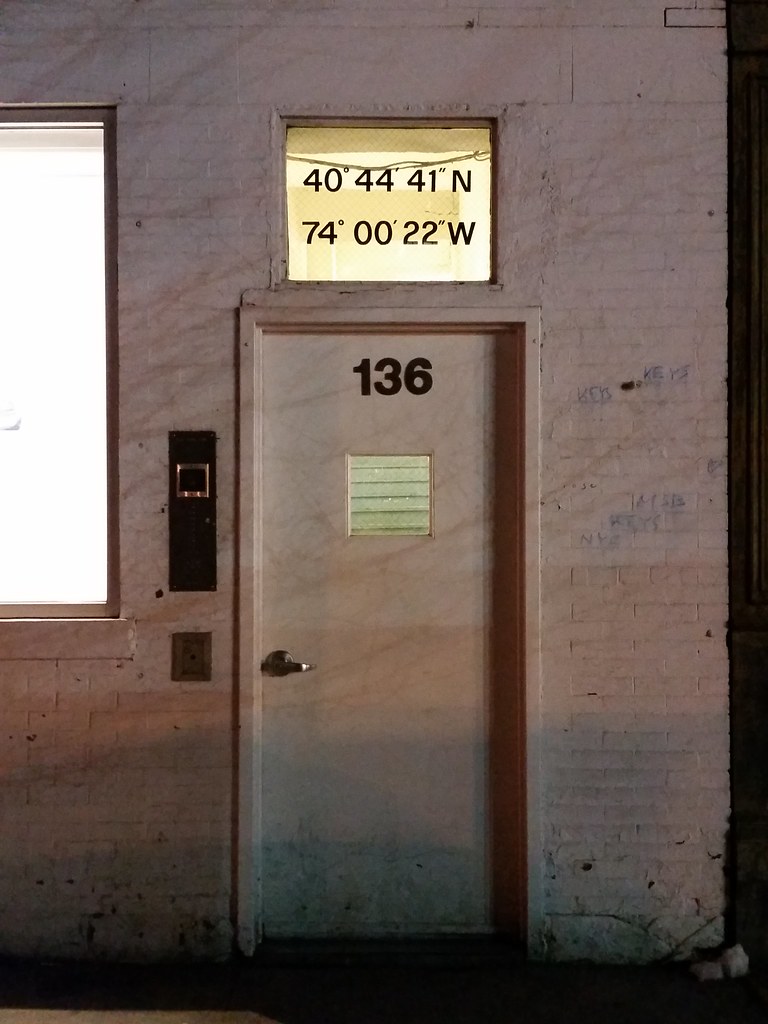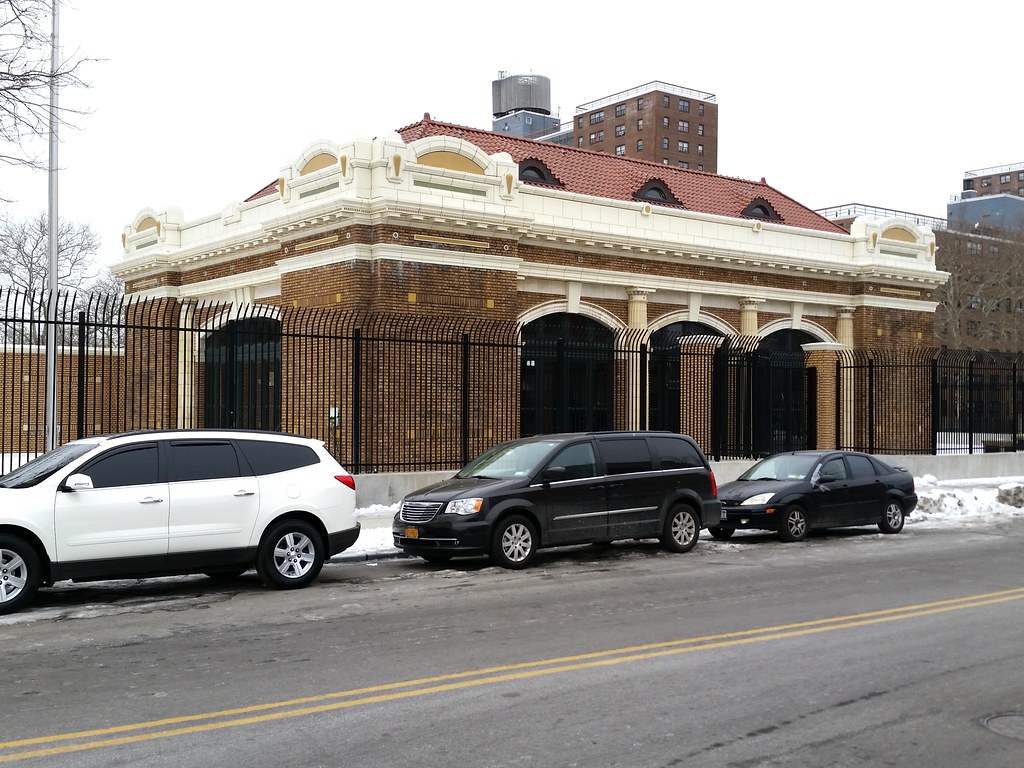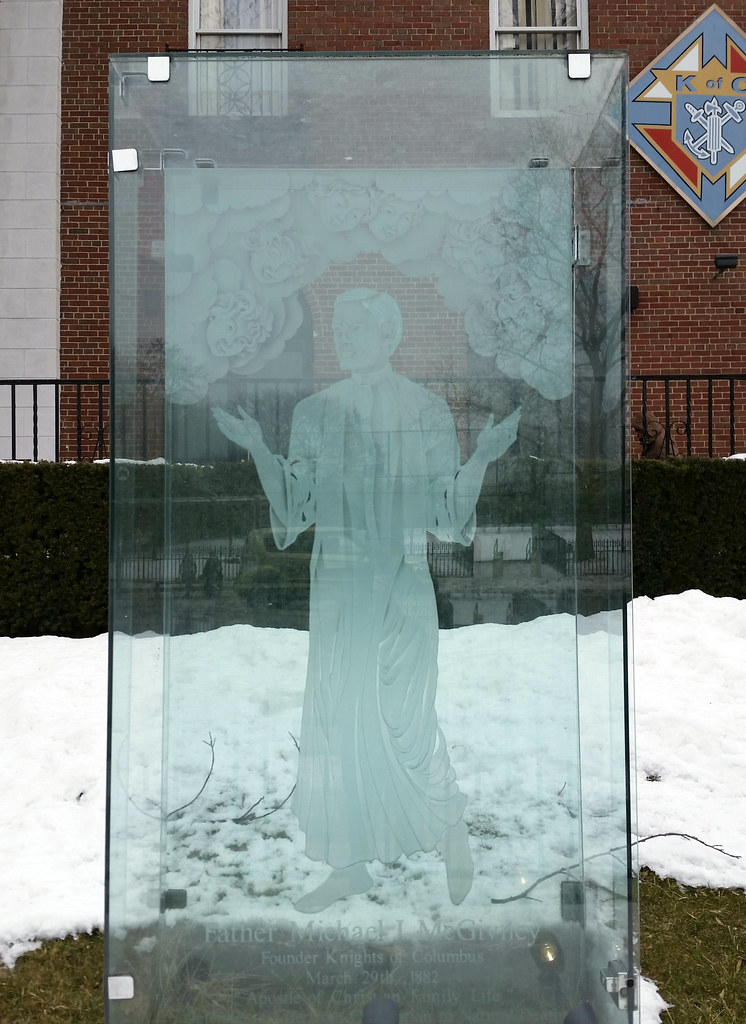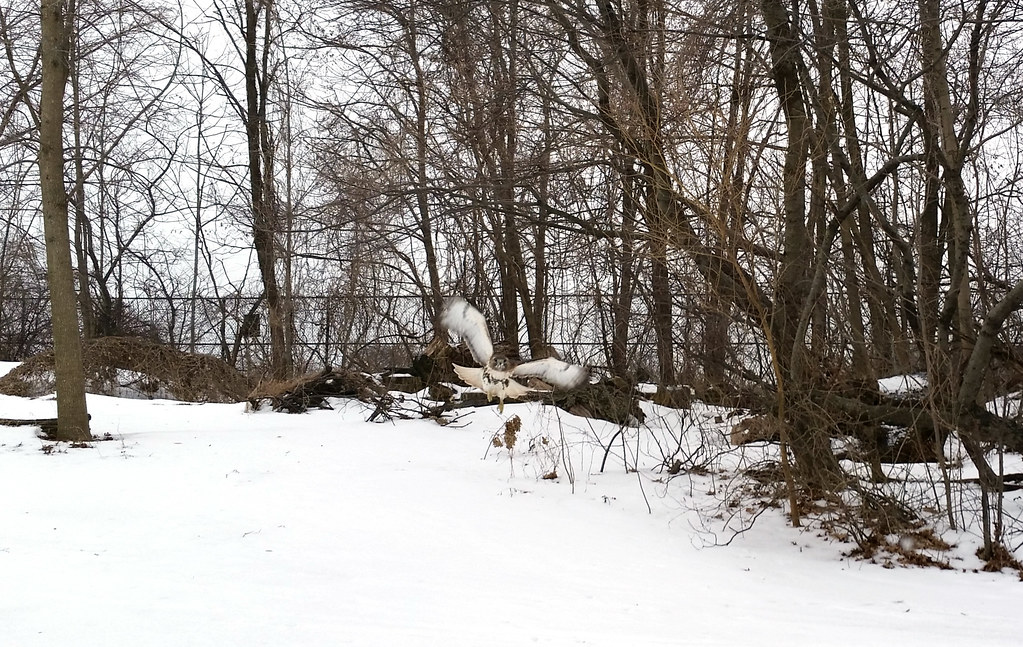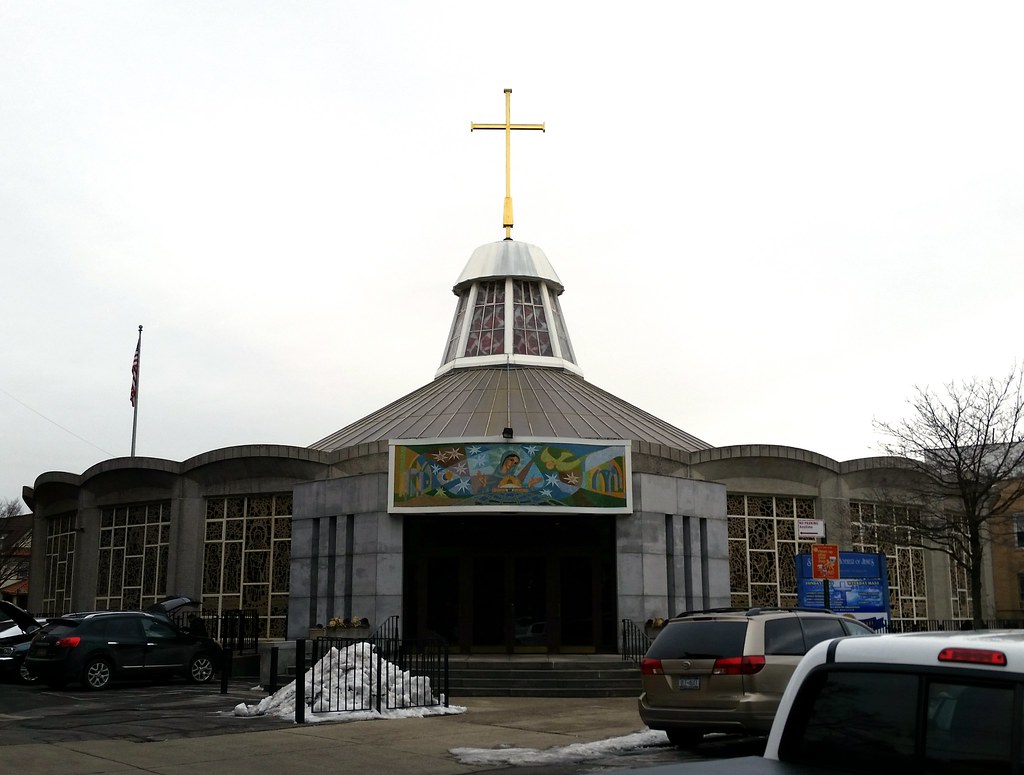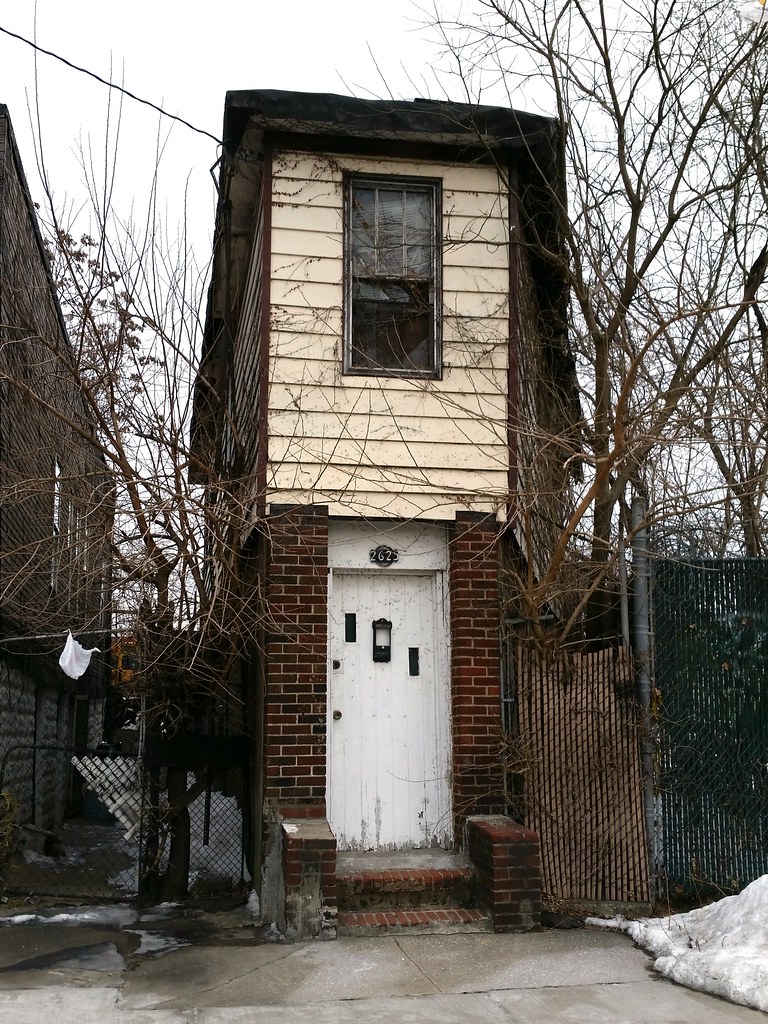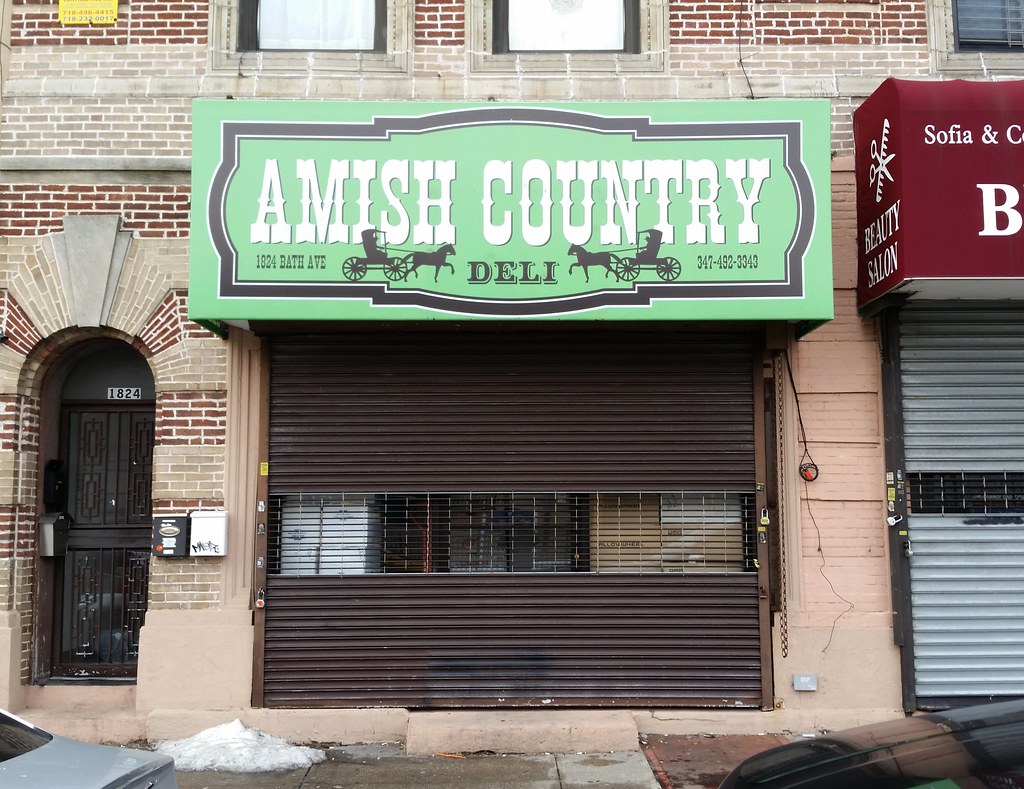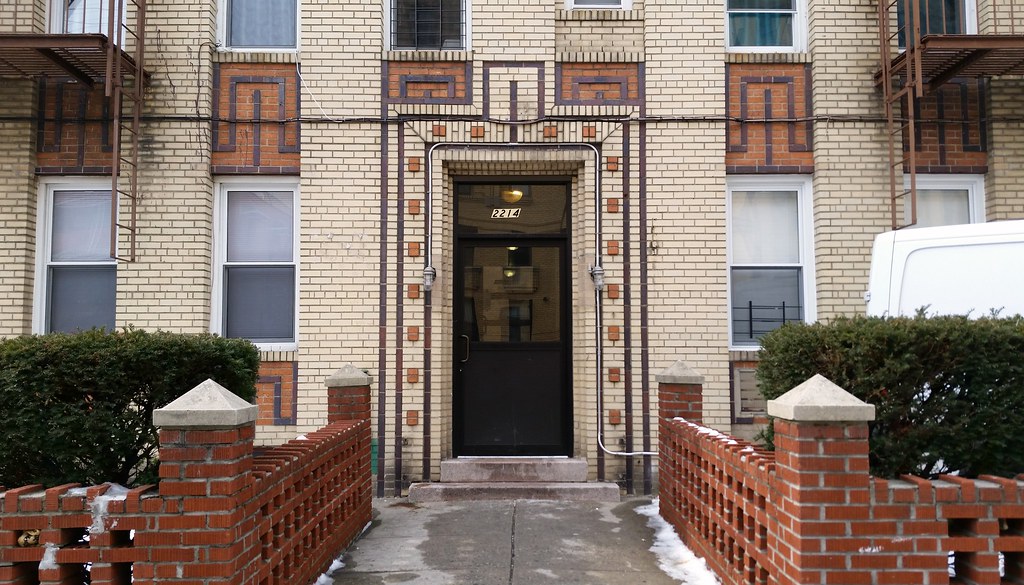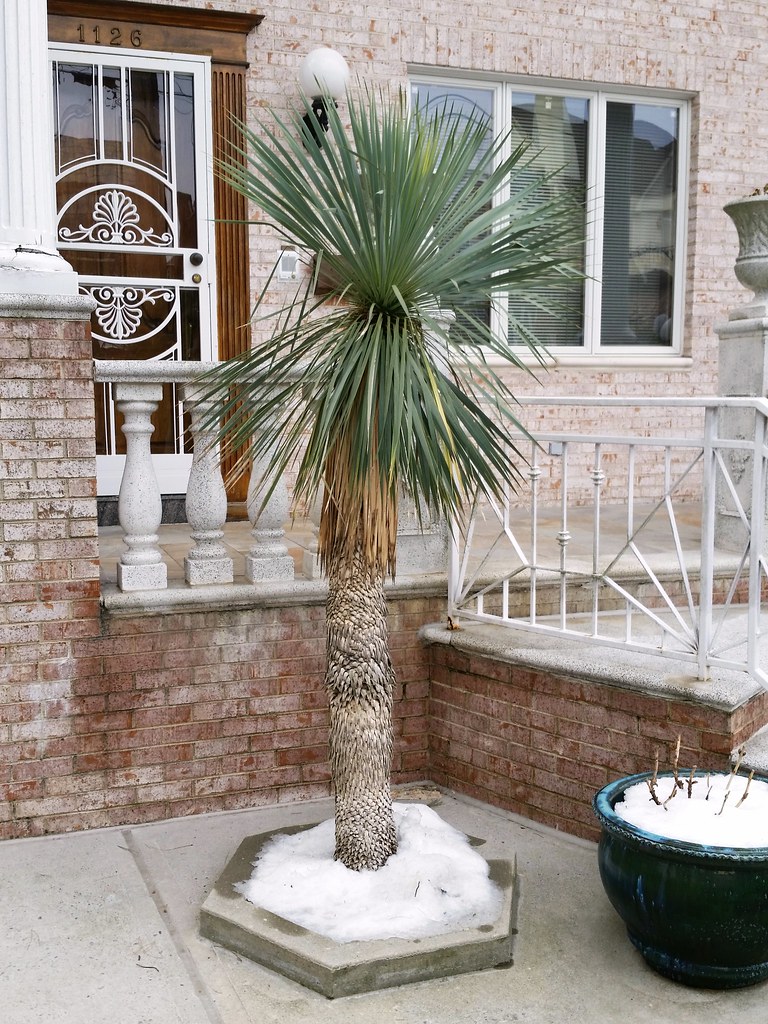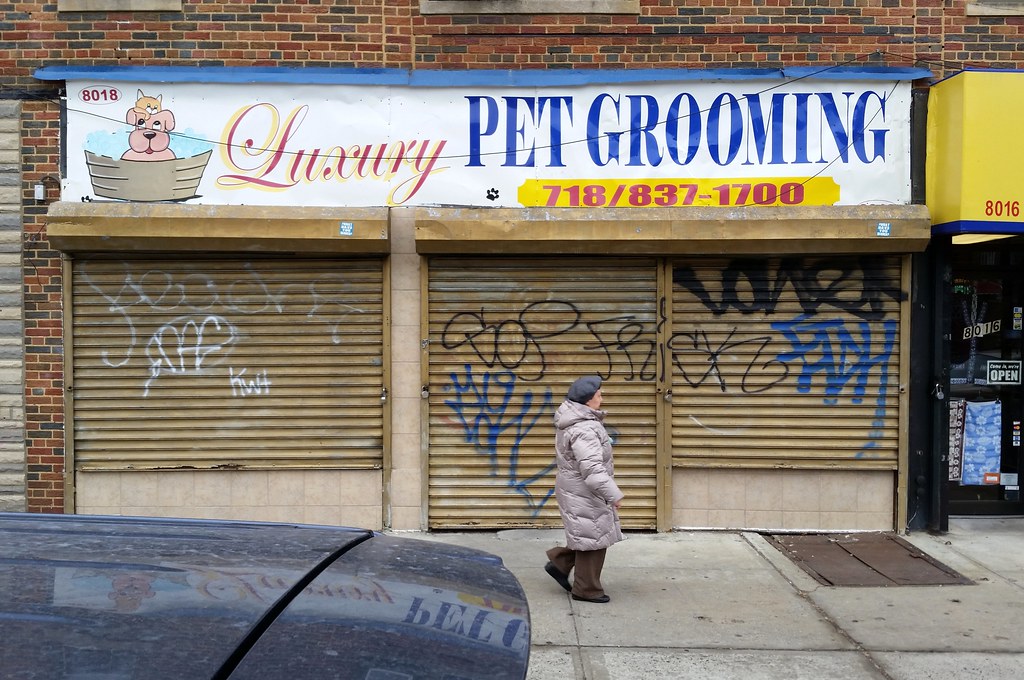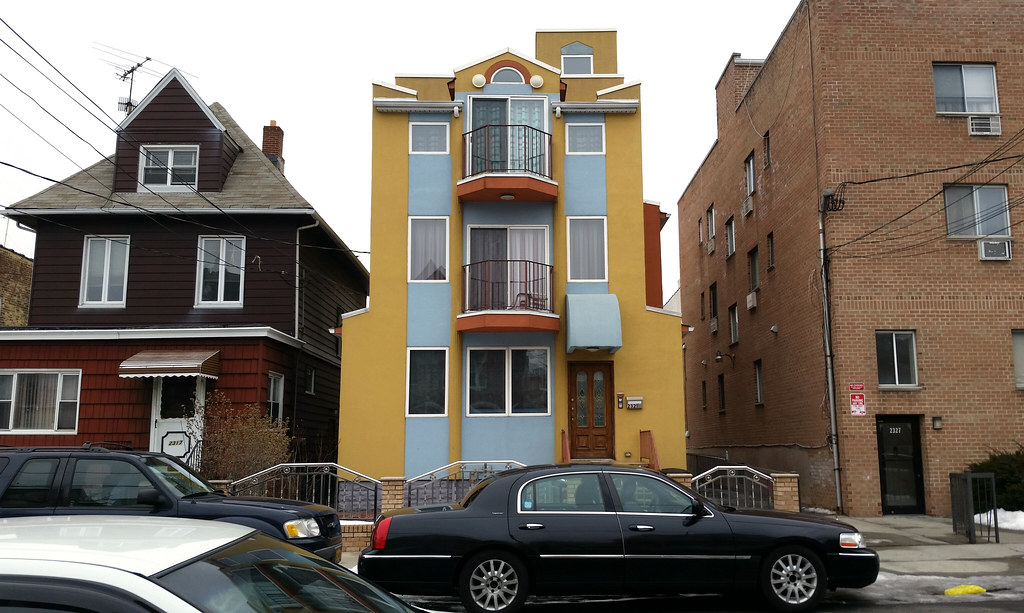
I had to head into Midtown to run a couple of errands today. I took this shot on the way to the subway in Astoria.

at Bloomingdale's. How do they decide which flags to fly? Here's an explanation from 1995.

Zoom in to see the mighty beasts "curl[ing] their trunks around the struts of the marquee, seemingly preventing it from falling on arriving guests." Actually, the elephants' trunks are no longer connected to the marquee, but you can see that they once were. Three of the elephants are currently holding up flagpoles, while the fourth has cast off all of its worldly burdens and is just lazing about.
Now a W Hotel, this Emery Roth-designed structure was originally the Montclair Hotel. The elephents aren't the building's only playful detail. Atop some of the lower-floor windows, hunched-over little men appear to be bearing the immense weight of the edifice on their seemingly undersized backs.

If you've got $1500 or so to blow, you can spend a night here at the former Hotel Lexington (closer look) in the Centerfield Suite, where Marilyn Monroe and Joe DiMaggio lived for some time during their brief marriage.
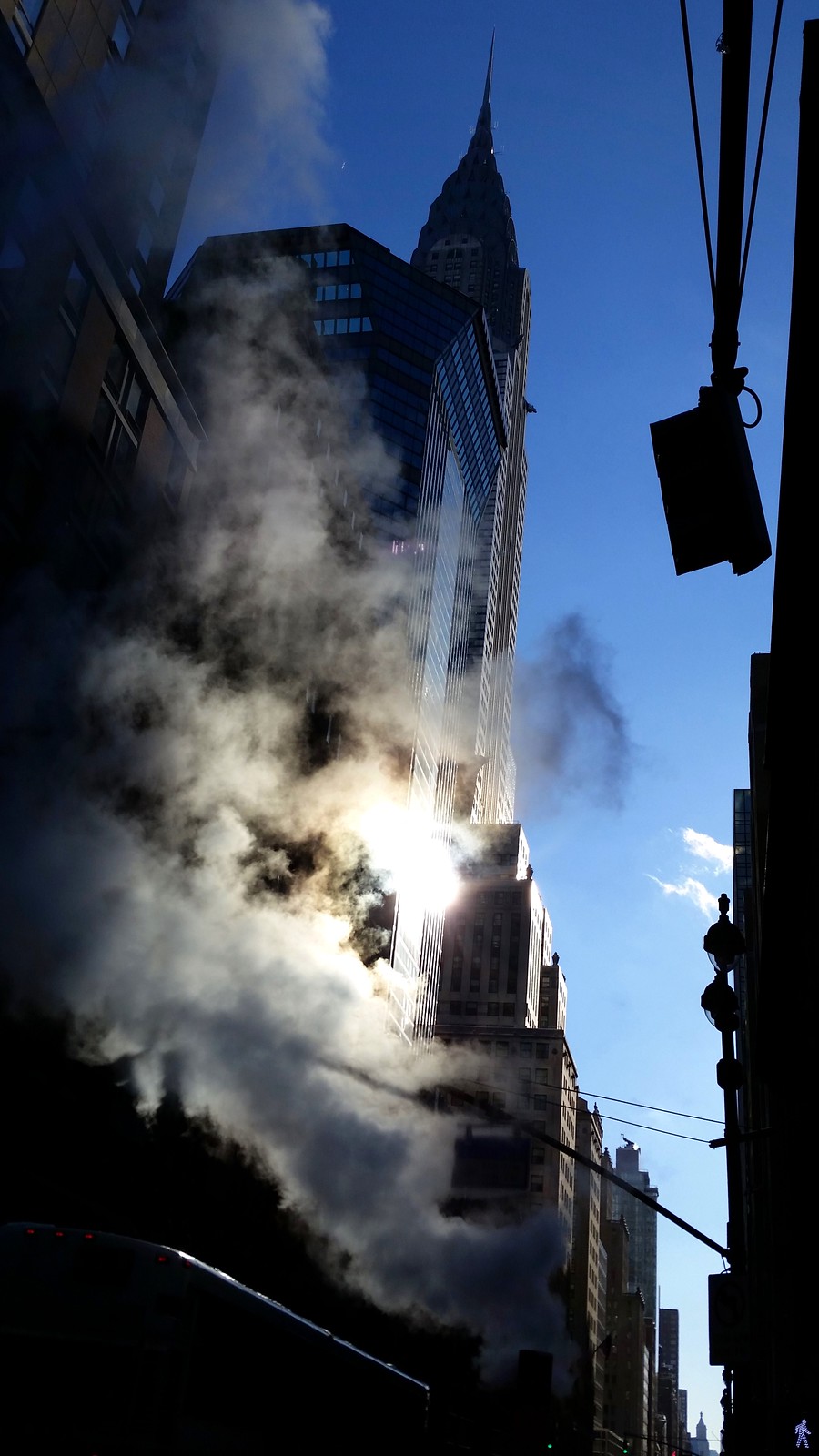
The Chrysler Building towers over a Lexington Avenue obscured by the steam from a Con Ed street "chimney".
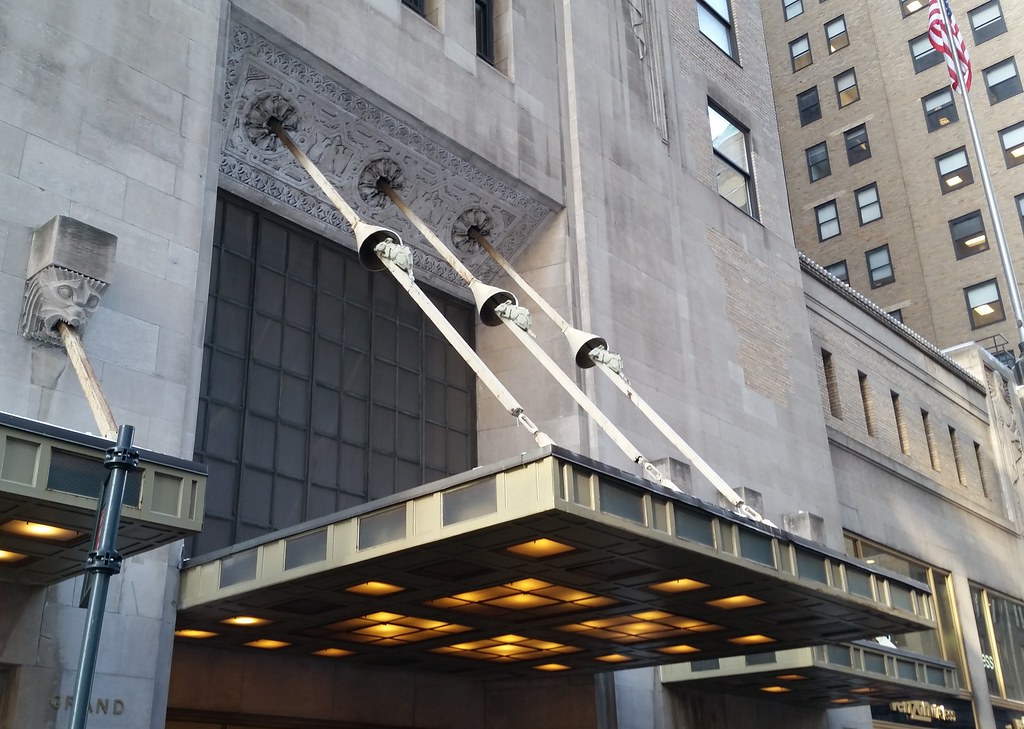
If you look up above the Lexington Avenue entrance to the Graybar Passage (the pedestrian connection to Grand Central Terminal that cuts through the Graybar Building), you'll find a surprising sculptural sight on the cables supporting the canopy: rats! The unwanted little varmints are trying to sneak into the building by climbing up the cables, but they're unable to get around a set of conical baffles similar to the devices used to prevent rats from scurrying up hawsers (mooring lines) onto docked ships. But lest you think the humans have outsmarted the crafty rodents, take a closer look and you'll see many more rats already aboard the Graybar, clustered around the hawseholes where the canopy cables are attached to the building.
The jewel-like brick structure stands unmarked in a jumbled corner of Brooklyn, amid housing projects and plain rowhouses and elevated train tracks and the headquarters of the Aardvark Amusements carnival ride company.Read more here.
Soaring ornamented columns frame arched windows 15 feet high. Eye-pleasing rhythms in the Beaux-Arts style abound. A golden eagle gleams atop a flagpole.
For all the building’s splendor, though, many in the neighborhood have no idea what goes on inside.
“I would think a library, or hopefully some kind of center for youth?” guessed A. J. Malone, 24, who was walking by on a recent afternoon.
Taylor Jones, 23, admired the facade.
“I’m thinking it’s some kind of sort of mausoleum” for the Metropolitan Transportation Authority, he ventured. “It looks very secluded in there.”
It is a sewage pumping station.
Not just any sewage pumping station. It is the Avenue V pumping station in Gravesend, near Coney Island, the largest in New York City, a nearly 100-year-old testament to the majesty of public works that conveys the daily waste of 300,000 residents to a treatment plant in Bay Ridge.
(We've actually encountered a few good-looking sewer buildings now. You can see the others here.)
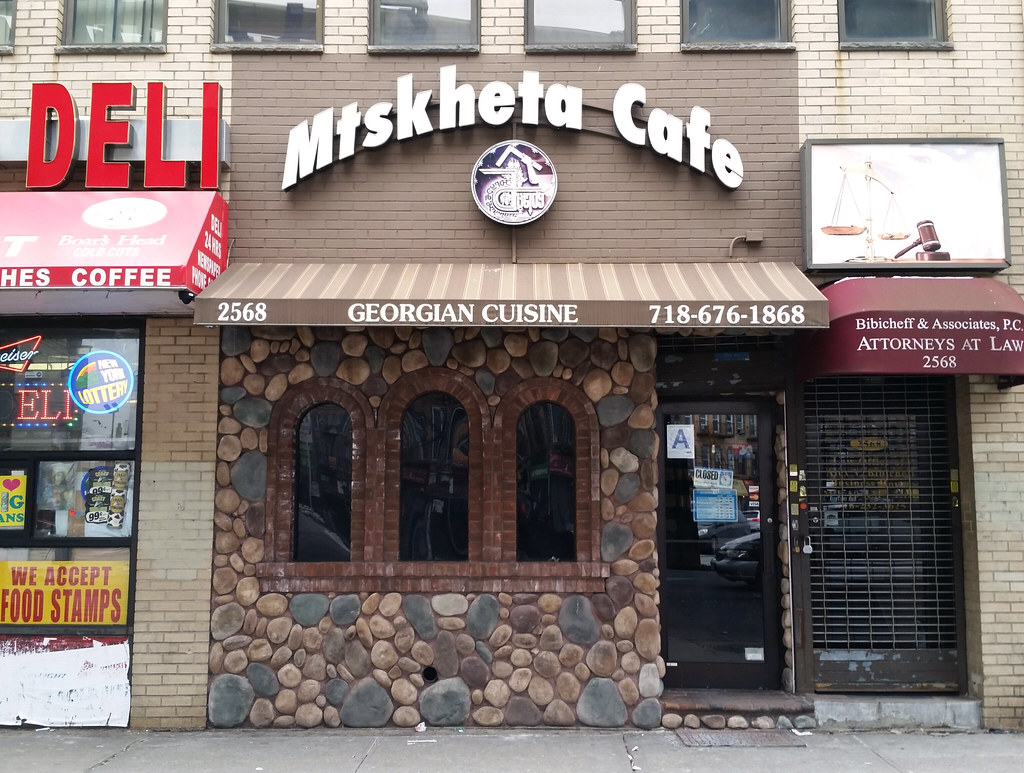
In addition to containing an excellent run of consonants in its name, Mtskheta is an ancient Georgian city whose historic Christian monuments are a UNESCO World Heritage site.
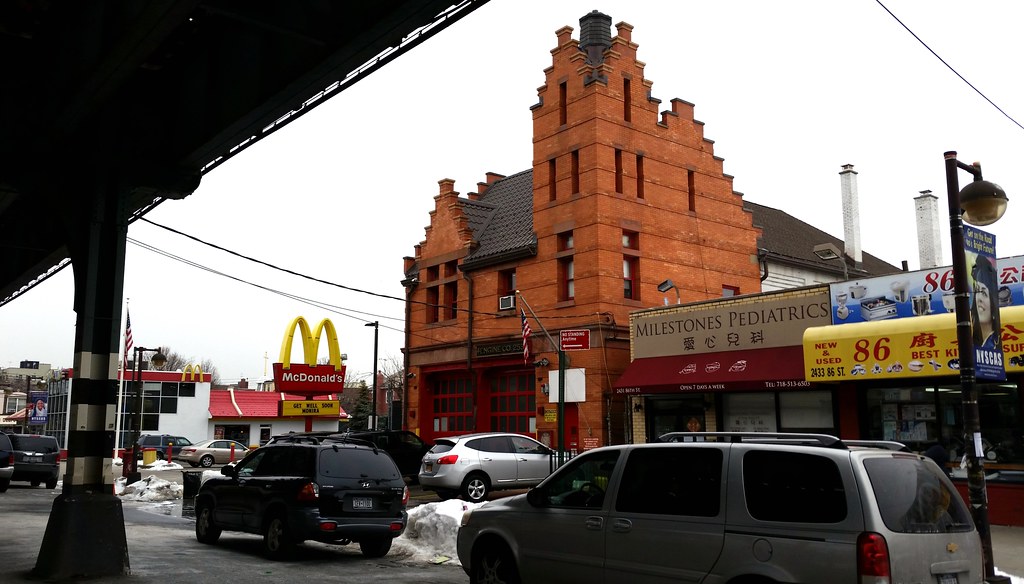
This Dutch Renaissance Revival firehouse was built in 1895-96 for the then-independent city of Brooklyn.

While stationed at neighboring Fort Hamilton in the early 1970s, Tiger Woods's father Earl played golf for the first time here at Dyker Beach, which is said to have been the world's busiest golf course in the mid-20th century.

Here's a wider shot of the whole gate. We may be in Brooklyn, but this is some top-notch Queens chrome.
Brought to you by Steve Campanella, "a retired Marine and compulsive collector".
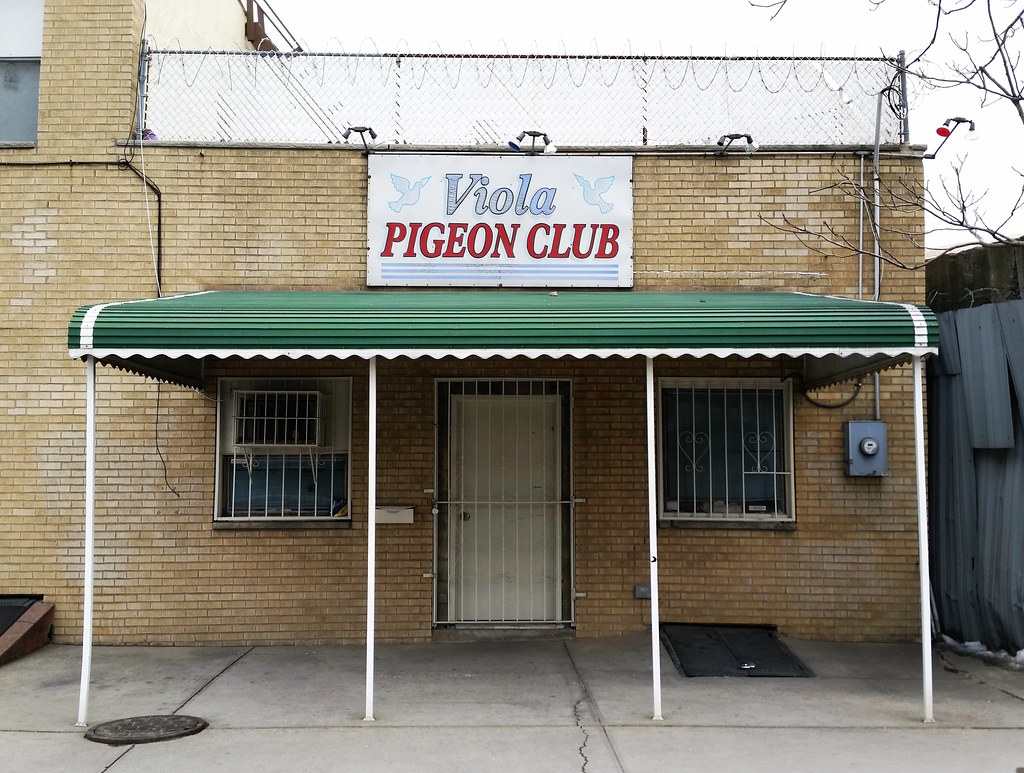
From the NY Times, December 9, 2007:
If there were a commissioner for pigeon racing in the five boroughs of New York, in recent years that title would have gone to Frank Viola. Mr. Viola, a slight, white-haired man from Bath Beach, Brooklyn, founded his namesake club in the early 1990s and ran the Frank Viola Invitational for the last 16 years. With 1,500 birds, the race became one of the largest in the city, the Kentucky Derby of the pigeon season.

This Islamic community center occupies the former Colonial Mansion kosher banquet hall.
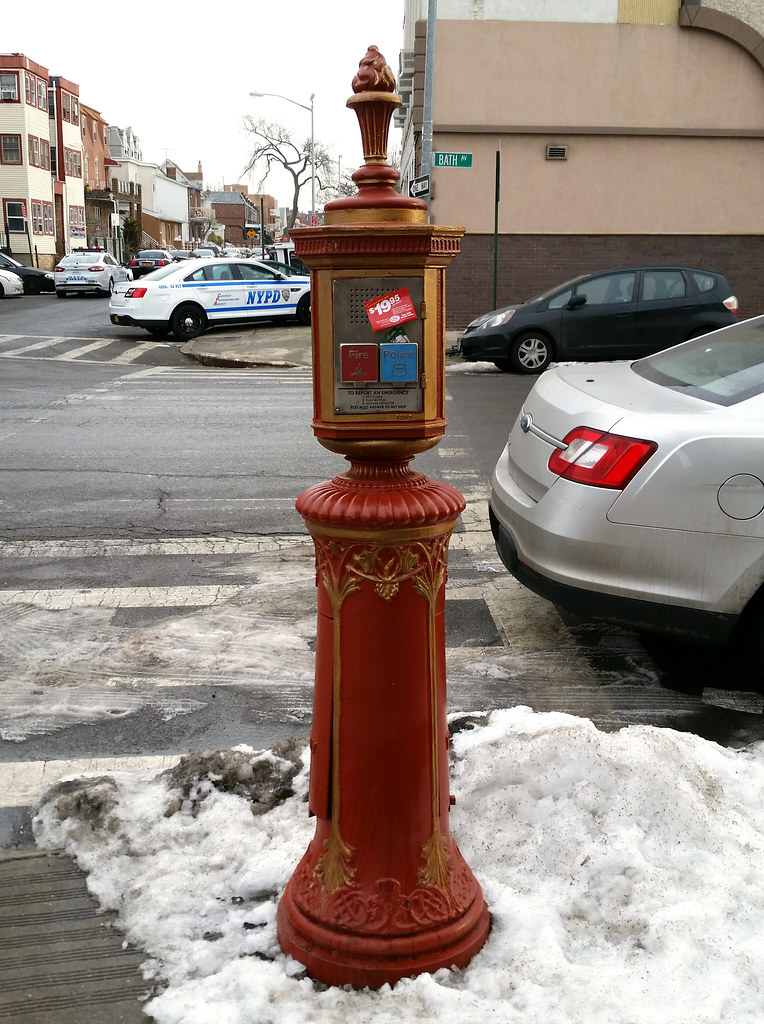
By and large, NYC's emergency call boxes are a slovenly lot. But there are some notable exceptions, including an even more dolled-up version of the one you see above.

of the stately 62nd Precinct station house, which was apparently once home to the 70th Precinct

On the other side of this gate is Dyker Beach Golf Course, where just yesterday I saw two red-tailed hawks maybe 250 yards (an easy Tiger Woods drive) from here.

There are a number of terra-cotta emblems, some visible above, adorning the forecourt of the Columbus. The Santa María is represented on two of the emblems (close-up), as is the Niña, but the Pinta is nowhere to be found!
An inscription on the other side of the entryway indicates that the building was erected in 1926. An ad that ran in the Brooklyn Daily Eagle in 1927 proclaimed the Columbus to be "The most perfect and up-to-date Elevator Apartment House in Brooklyn", and boasted of these features:
Every improvement for convenience and comfort, including solarium on roof and auditorium for socials. Equipped gymnasium in basement with attendant physical instructor.
Italian garden; telephone and radio connection in every apartment; wall safes, incinerators, Otis elevators. A few choice apartments available.
Two blocks from elevated and subway trains to Times Square. Surface cars nearby. Convenient to schools and churches.

This article offers a photo tour of the house's "aggressive" sculpture collection. It also includes a close-up of one of the dragon/"gargoyle" light fixtures installed outside the second-floor door. Prior to today, I believe, we had seen that type of fixture exclusively (not to mention abundantly) at two different Pilgrim Church properties.

This sculpture, which undoubtedly owes its existence to Henry Stern, stands in Patrick O'Rourke Park (named for a man who died from brain damage sustained as a kid during an operation intended to cure bedwetting), the former site of a World War II-era victory garden.

This house (closer look, Street View) is somewhat understated in comparison to its sibling in Rosedale.

Much like the gentlemen we saw gamboling about the excavated soccer field this morning, the tabletop gamers of Milestone Park are not about to let the weather curtail their recreational options.

